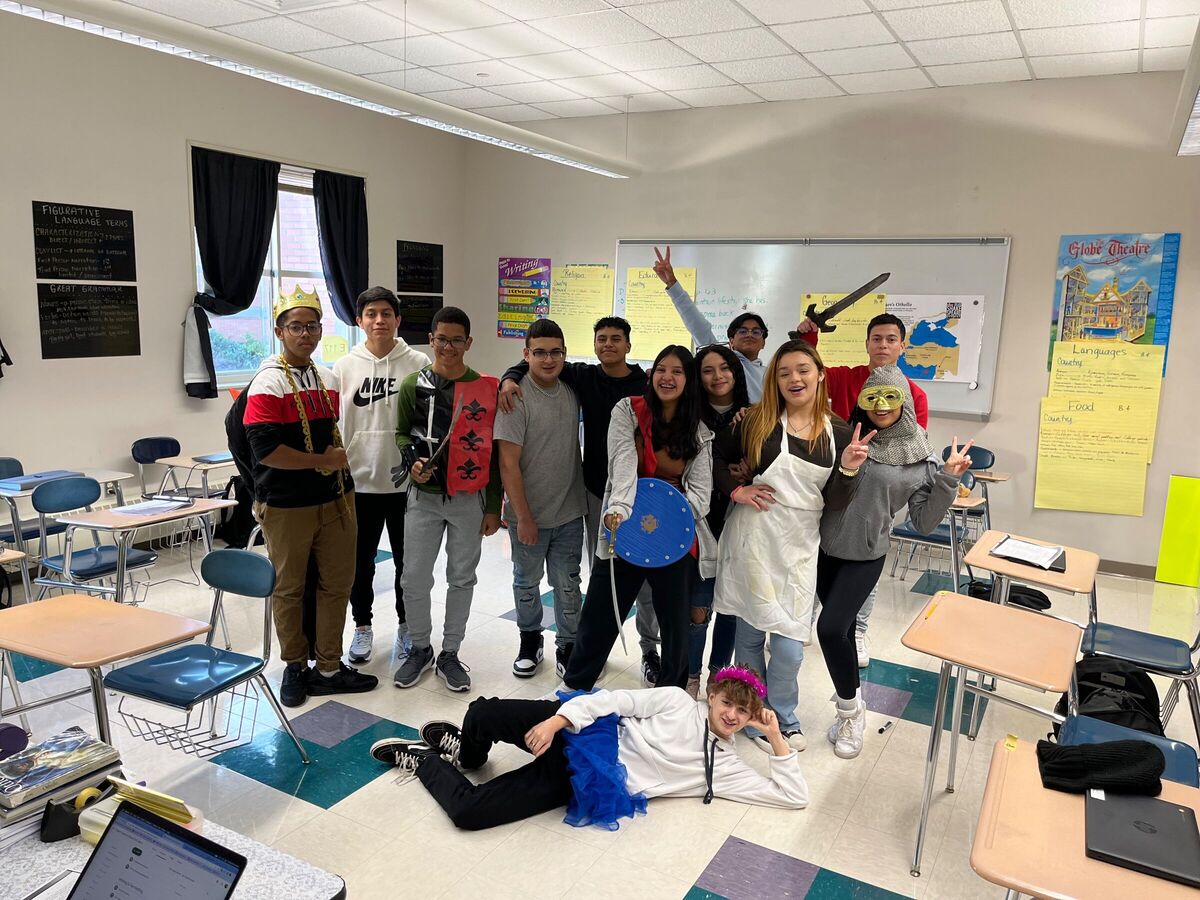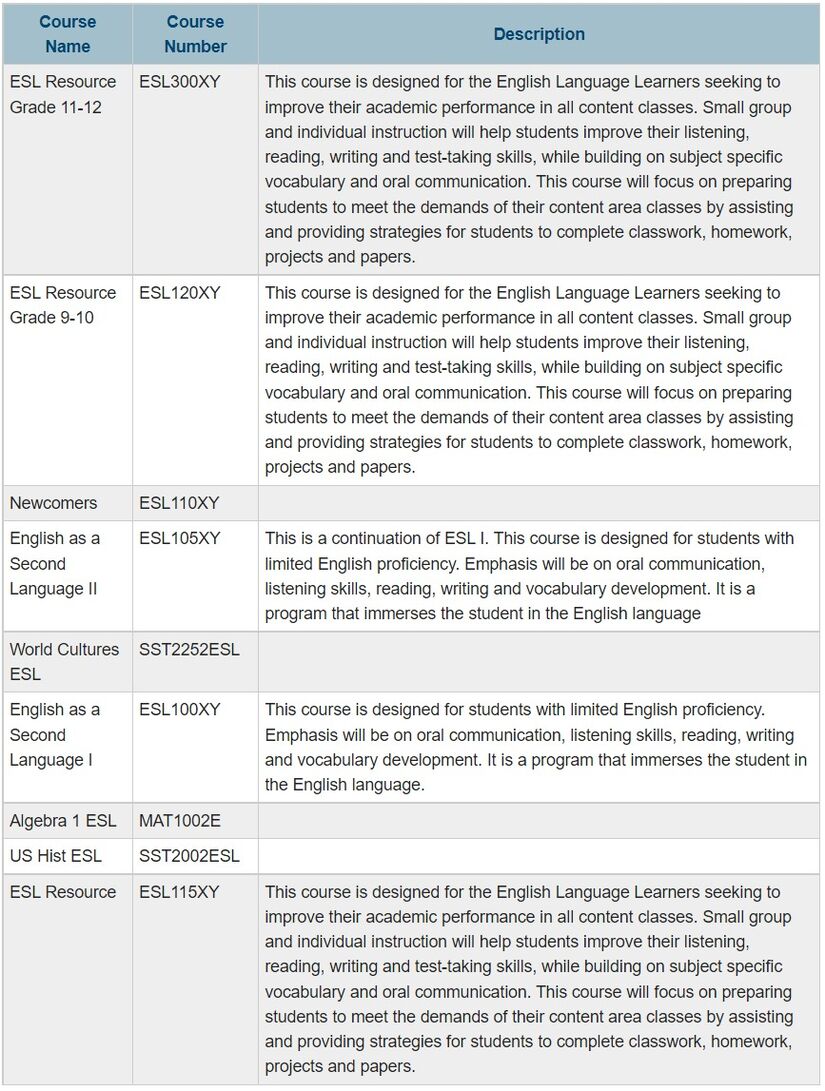Image


Over the course of a few years, no one can deny the effort that the English as a Second Language (ESL) Department has put toward EHHS and the EHHS English Learner students. With all the efforts, the ESL/ELL Department has grown so much over the past few years.
ESL and sheltered classes have continued to grow across EHHS content areas to help "newcomers," non-English speakers who join the EHHS community. According to Mrs. Dyanne Michalowski, an ESL teacher, the difference between an ESL class and a sheltered class is that ESL classes teach the students the English language’s grammar, focusing on writing, listening, and speaking. The ESL class teachers create strategies for students to learn the basics that they need to know in order to speak English. Sheltered classes are a version of many content area classes that provide extra help and different approaches to help EL students learn the content without the barriers that can arise from their knowledge of the English language. EHHS currently has sheltered classes for math, integrated science, civics, English I, algebra, biology, U.S. history, American history, English 2, and American literature.
Mrs. Claire Ellis, the ESL and bilingual programs district facilitator, stated that there are about 350 students who are part of the ESL program across the district and there are around 80 ESL students in EHHS. Each sheltered content area class has between 15 to 20 students, and the ESL classes have around 20 students. EHHS also has ESL Resource classes, which are designed as a structured support class to provide students extra help with an ESL teacher to ensure they can complete work from their other classes.
In order for ESL students to be promoted from the ESL programs, they have to be proficient in the LAS test, the language assessment scale test. This test measures the progress of the students in the areas of speaking, reading, and writing to see what areas they are strong in. This test is given to ESL students every year to track their progress in speaking and learning English. Mrs. Michalowski says, “They have to meet the criteria, to exit the [ESL program] you have to score proficient in writing, listening, and reading.”
EHHS has increased to 9 ESL and sheltered teachers over the past few years. For sheltered classes, Mr. David Oshana teaches Integrated Science, Mr. Jacob Callahan teach biology, Mr. Adam Gardner teaches history, Mr. Jamie Gaudioso teaches history, Mr. Robert Belevich teaches math, and Ms. Themis Valsamis teaches English. The EHHS ESL teachers are Mr. Michael Hickey, Mrs. Dyanne Michalowski, Mrs. Claire Ellis, and Mr. Michael Khouri. According to Mrs. Michalowski, one certified ESL teacher is assigned to co-teach each sheltered content area class. Each ESL teacher works with certain subjects like math, science, history, and English.

The ESL/ELL program has grown so much that EHHS were able to add more teachers each year. Mrs. Michalowski stated that, “I started to work in EH in 2010. I was here for 2 classes, and it started growing each year. We were able to add at least 1 teacher every year.” The program has grown so much that currently; EHPS has a full time ESL teacher at every school in the district.
Mr. Adam Gardner, an EHHS social studies teacher, stated that teachers were asked if they would like to teach sheltered classes, and he chose to teach one to help the students improve. Besides helping students, Mr. Gardner also stated that “Teaching the shelter course had made me learn new skills like how to introduce the topic better.”
Over the past few years, EHHS has added multiple new classes for ESL students and more sheltered classes because “we see so many more students coming, and we want to make sure that students can be successful,” according to Mrs. Ellis. The ESL department wants to be sure that they have and provide enough support and resources for those who need them in order for them to learn the language successfully and to graduate.
Like many other teachers, ESL teachers also set a goal for their students. Mrs. Michalowski's goals are that she wanted her students to succeed and are able to communicate, comprehend, and graduate from high school while Mrs. Ellis “[wants] them to be biliterate.” Her goal is to keep the students' new and old lives balanced. She wants her students to learn a new language while at the same time, remembering their native language.